“I am not a songwriter.” Before the pandemic, this statement was true.
But today, the “t” in “not” has to become a “w” to make a new true statement: “I am now a songwriter.”
On December 10, my new music video of the song “Safe Passage: Animals Need a Hand” launched on the YouTube channel of my supportive employer, Great Smoky Mountains Association. Now it has reached over 3,500 views. So, I thought I’d write the story of how it all began.
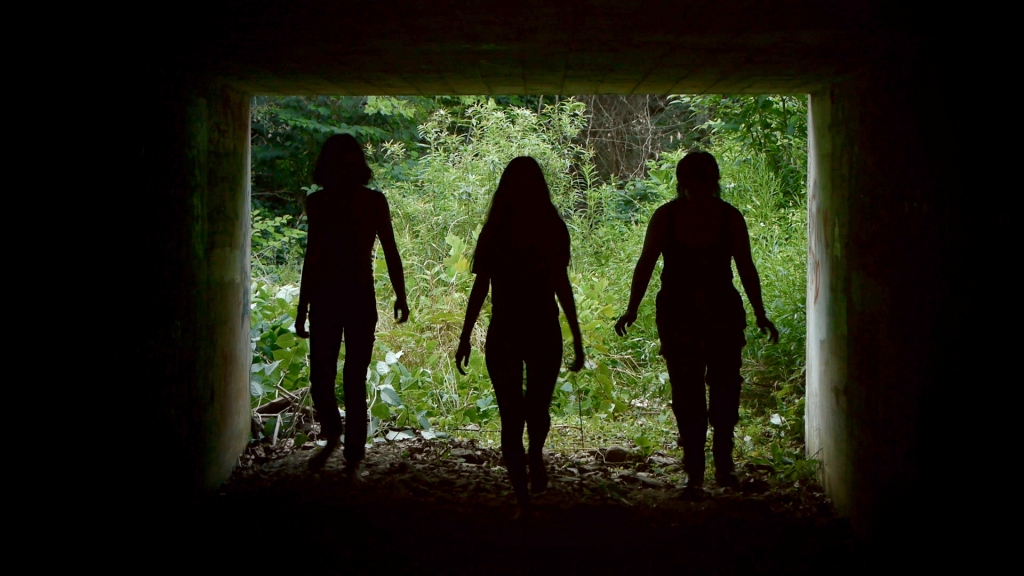
Sometime back in 2018, I was driving home from Asheville on Interstate 26 listening to WNCW, a noncommercial public radio station operating from Spindale, North Carolina. Like a bolt from the blue, a song came on that created such a shift in my focus that I was scarcely aware of driving my vehicle. The refrain that struck me to my core, and what I assumed was also its title, was “we used to be birds.” I strained at the end to be sure I picked up the name of the artist. Appropriately, and easy to remember, it was Jonathan Byrd. I distinctly recall feeling that this was an important moment.
From that time on, I followed Jonathan Byrd and the Pickup Cowboys, purchasing some CDs and signing up for the band’s email newsletter, the Byrd Word. Wednesday nights at our house became Jonathan Bryd night as we watched the band performing live from a small music venue in White Cross, North Carolina. As the pandemic descended and we all struggled to feel connected, the band continued to provide their live streams, first from the Kraken while it was closed to its local audience, and later from the loft of Jonathan’s home. These three-hour concerts helped us feel a sense of community and sanity during lockdown and into the “new normal.”
At the same time, from March to May of 2020, in an unpremeditated fit of creative passion for wildlife and their struggles to cross highways like I-26 and I-40 near the Smokies, I wrote the story that became my children’s book, A Search for Safe Passage. I’ve waxed on about that creative process in an earlier blog post here.
On July 27, 2020, the book’s illustrations were being created by GSMA Publications Specialist Emma DuFort while I pulled together the educational material for the back section. Sitting at my orange-and-yellow-crackle-painted desk in my home office in Flag Pond, Tennessee, I opened the Byrd Word to read that Jonathan was inviting fans to join him for a virtual songwriting retreat.
“Could I write a song?” I heard myself say out loud, as if I had momentarily split in two and was asking my other self a question. I pushed back my chair, stood up, and headed to the kitchen to refill my coffee. As I did this physical motion, I simultaneously opened my mouth, and sang the words, “Safe passage, animals need to cross!”
Coffee in hand, I returned to my desk and turned on the digital recording app on my phone. Here’s what came out:
Safe passage, animals need to cross.
Safe passage, animals need to cross.
To cross the highway, oh yeah.
To cross the highway, oh yeah.
Ancient trails have been put down for centuries.
You can’t try to tell me it ain’t true.
Foxes and bobcats, coyote, and bear and elk are hit.
You can’t tell me it’s not part of you.”
And that was just the beginning. I realized that I needed a way to write the music down that was flooding into my head. I also realized that I missed having a piano at the ready, as had been the case when I was growing up in eastern Kentucky. Mother played mostly “by ear” and provided me with both piano and voice lessons for about five years, but they never really “took,” and I gave up to focus on horseback riding and boys. But now I wished for a keyboard to pluck out the notes. I found a couple of songwriting apps that allowed me to identify and document the melody I was creating.
Jonathan Byrd’s songwriting retreat
By the time the songwriting retreat rolled around in September, I had the basis for “Safe Passage: Animals Need a Hand” already in draft form both in terms of the lyrics and the melody. But I needed direction on how to hone the composition and a boatload of encouragement, both of which I got from the wonderful three-day course.
On the first Zoom meeting on Friday night, I met the other seven students, who were mostly musicians and songwriters already. They were supportive, open, and excited that I was stepping out of my comfort zone to try to write a song. We all enjoyed getting to interact with Jonathan and listen as he shared the backstory behind several of his own popular compositions.
On the Saturday morning session, we got to know each other better and explored writing as Jonathan shared more examples of pairing lyrics and melody from his repertoire. Saturday afternoon each member of the group would have just one-half hour alone on a Zoom with Jonathan. This was my chance to get specific direction, and I anxiously prepared so the time would be spent as effectively as possible.
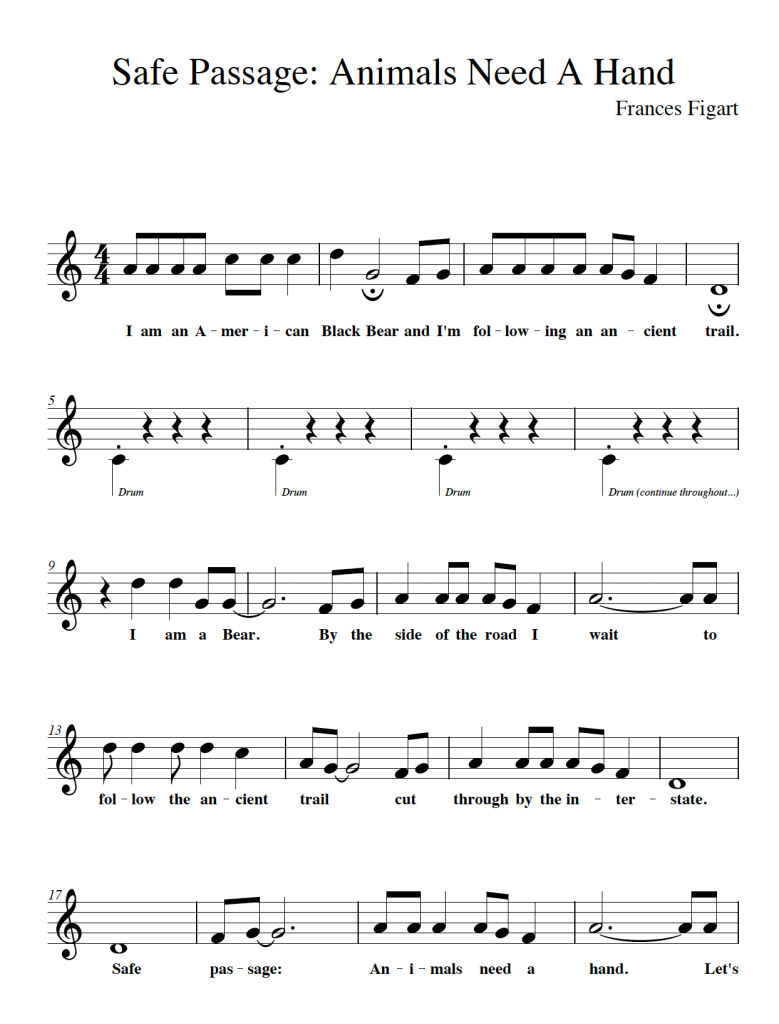
I’m still amazed at how well this one-on-one interaction worked. I showed Jonathan my draft of the lyrics and made a woeful attempt to sing him the melody. He liked the poetic conceit of the person saying they are the animal and suggested some very simple changes to the lyrics. In the verses, rather than something complex like “I am a white-tailed deer,” the stark “I am a deer,” would be better. This change helped me to choose some other ways to simplify and the entire piece tightened up before my eyes.
After my “audience” with Jonathan, I had until the next morning to finalize my song. There was this phrase and melody stuck in my head that didn’t fit with the new streamlined style, yet it seemed to have to remain in the song: “I am an American black bear, and I’m following an ancient trail.” I realized this would hold space as a little introduction to set the tone for the song—and it ended up working perfectly.
When Sunday morning came, rather than “performing” nervously in front of the group, I recorded my version of the song using Zoom and played it back for them. My new friends all loved the composition and the lone hand-drum accompaniment that gave it the Native American feel I was going for with the melody.
Making a music video
Over the next six months or so GSMA’s marketing coordinator, Elly Wells, helped me to locate the right band to record the song. I loved The Fates from the moment we met, and they have their own story about how they worked with River Guerguerian to create the awesome harmonic piece that you hear on the music video. You can read about that in this column I wrote for the Asheville Citizen Times.
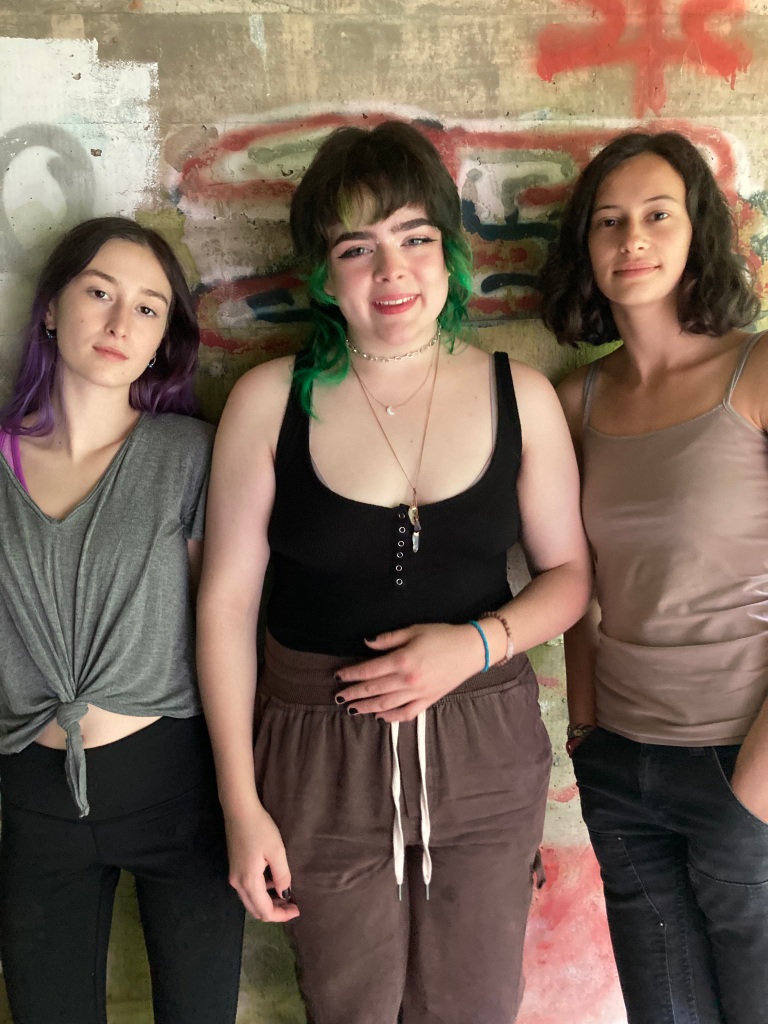
Before they even finalized the recording, The Fates got to perform “Safe Passage: Animals Need a Hand” on a special show dedicated to the Safe Passage project by Jonathan Byrd and the Pickup Cowboys. This occurred in March of 2021, timed with the launch of my book, A Search for Safe Passage.
Next, I had in mind to create the music video in a way that would ignite the wildlife crossing movement. Somewhat unpremeditated, I picked up the phone in early April to ask the person who was my first choice of director. Joe Lamirand became one of my best friends during the early 2000s. I had seen him create music videos before and knew how much he loved the editing process. Since that time, he had married my best friend from childhood, Mary Elizabeth. The two have several properties to manage in addition to their jobs. Would he take this on?
I was thrilled when Joe agreed to lend his talents to the project for which I had shared such passion. We began to plan the video shoot for late June and for several months Joe and I enjoyed the creative process in the roles of director and producer. After considering several locations in Asheville, we realized the simplest place to do the production was at my house and property in East Tennessee. This would allow us to get all the shots we needed in just one weekend as well as have a place to house The Fates. With Joe arriving a week before the shoot in order to plot out the entire script, the stage was set for a hectic but rewarding weekend of work.
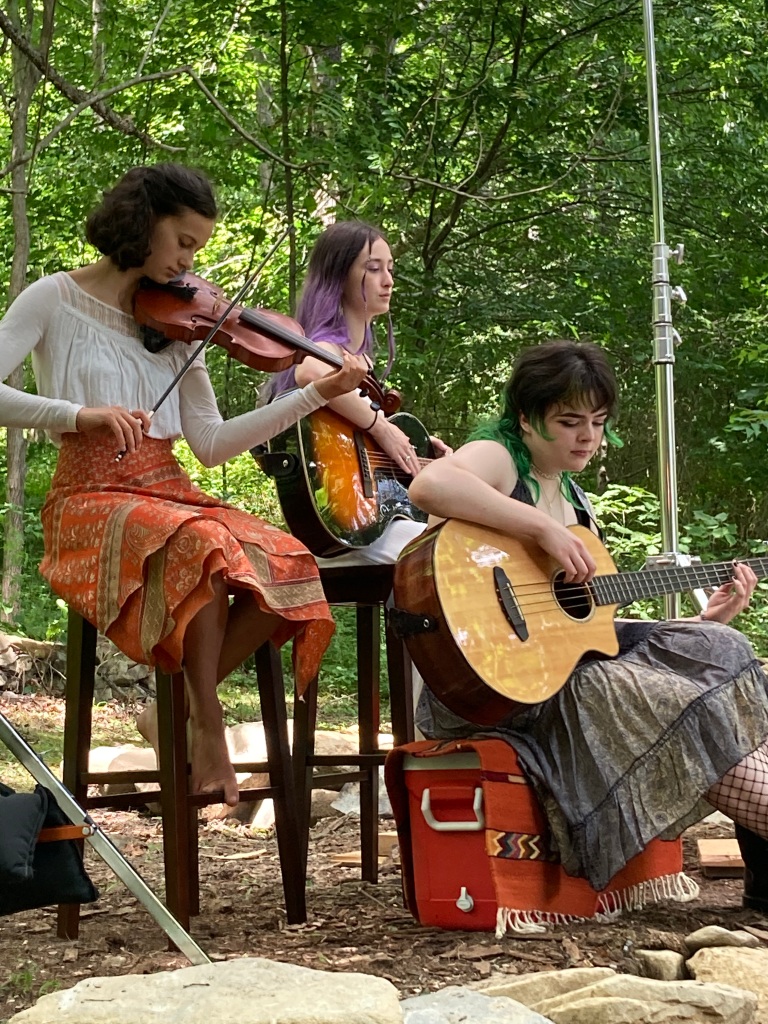
“Working on the video was a very fun and exciting experience,” said Natalie Karrh of The Fates. “We camped out for a weekend in Tennessee on Frances’s beautiful, lush property. Filming took place over a couple days and the first day was spent acting out the storyline of the animals’ journeys. The second day entailed the more musical aspect of the video. We were so lucky to have such talented and supportive people working with us the whole time. Frances was such a gracious host and made sure we were all comfortable and well fed. Joe was a very encouraging and patient director with a clear vision that he helped us all execute. Many other people came out to help, each bringing a sense of joy, community, and dedication.”
All of those wonderful people are named in the credits at the end of the video, which overlays footage of young black bears frolicking in the forest with Interstate 40 traffic raging by in the background, just visible and audible through the trees. Many folks heard about the project and sent small amounts of money to offset my costs. Some came and physically helped to make the shooting a success. Road ecology professionals from around the country helped us obtain b-roll. It was a true collaboration!
All this is not to say that I am now going to be writing songs every day, as does the immensely inspiring Jonathan Byrd. But I am content to have allowed my spirit for a fleeting moment to soar like the bird I used to be and to say “yes” to a notion that maybe I could do something that I didn’t think I was designed to do.
“In my dreams, we fly.” ~Joni Mitchell
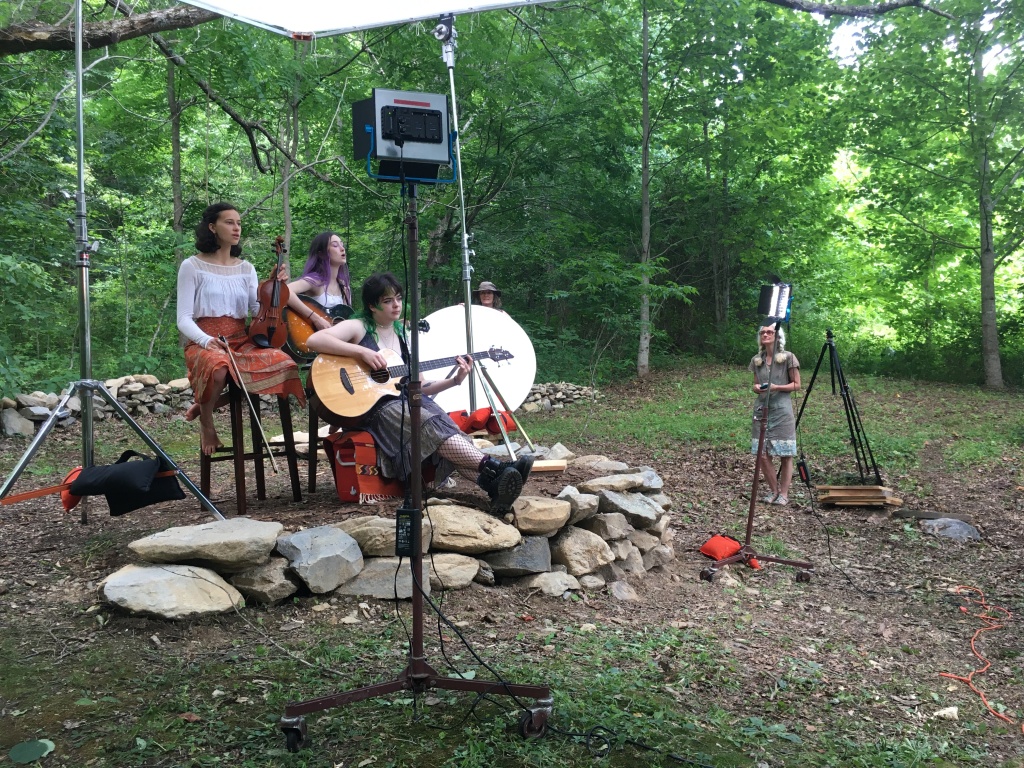
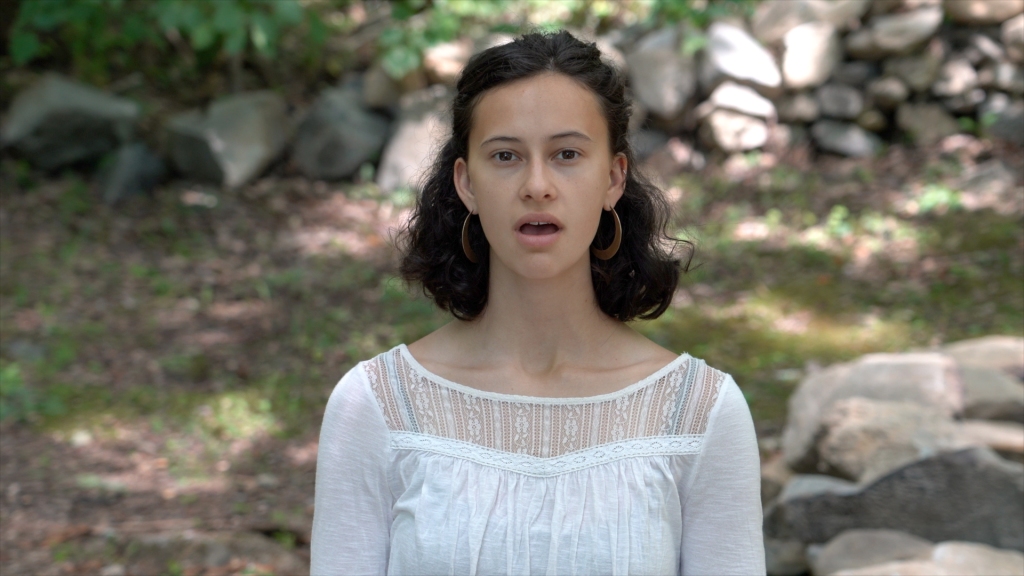
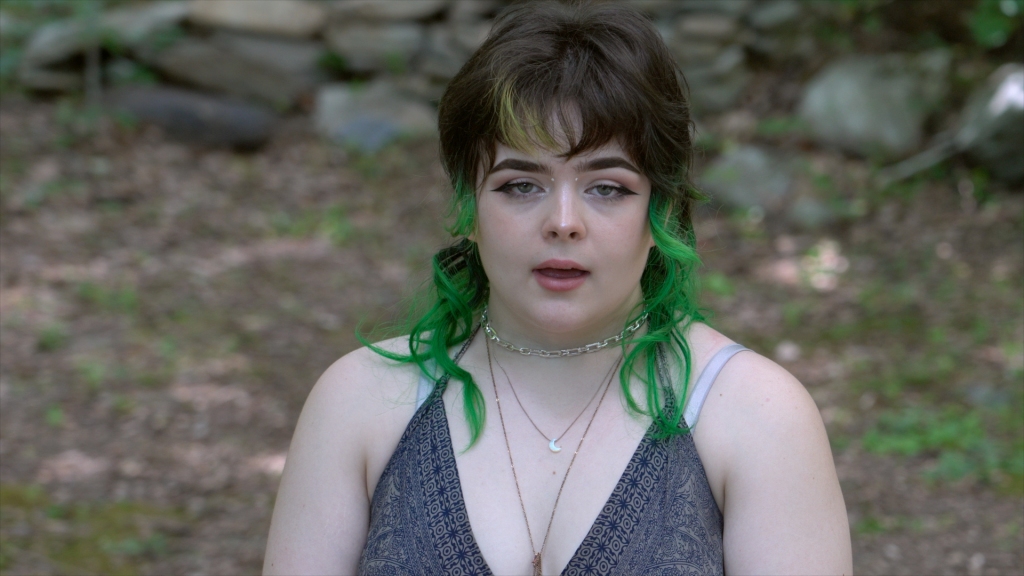

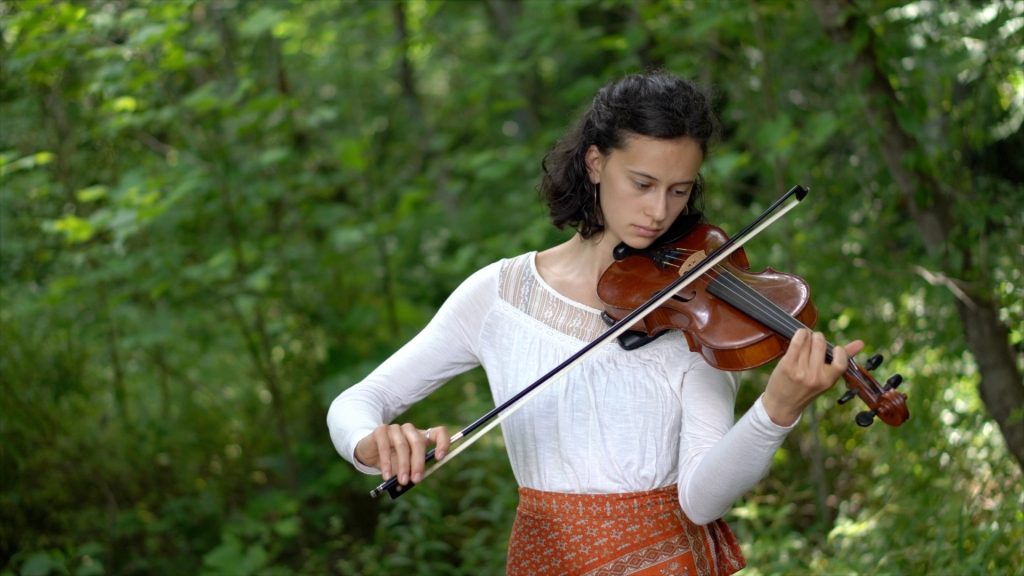
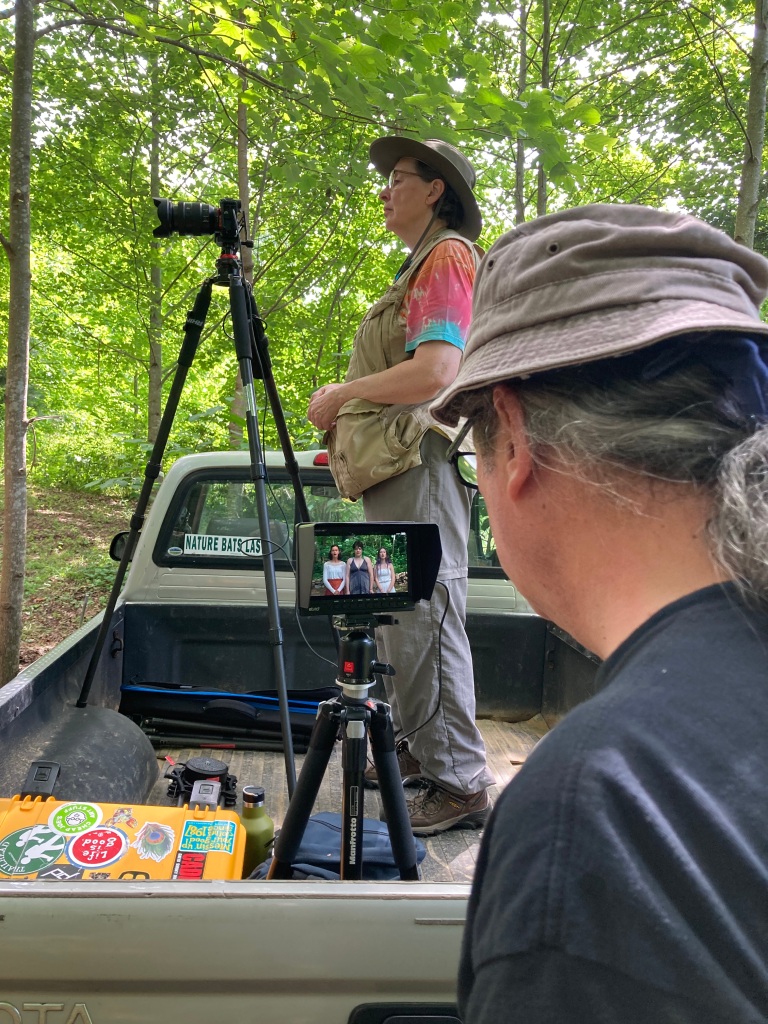
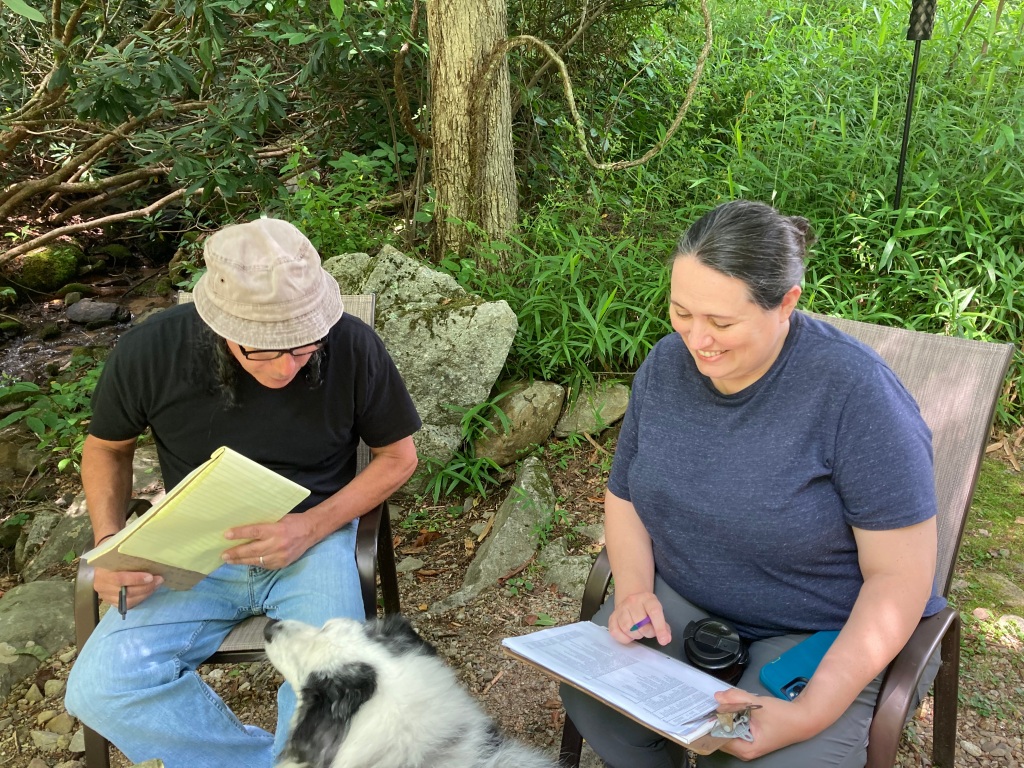
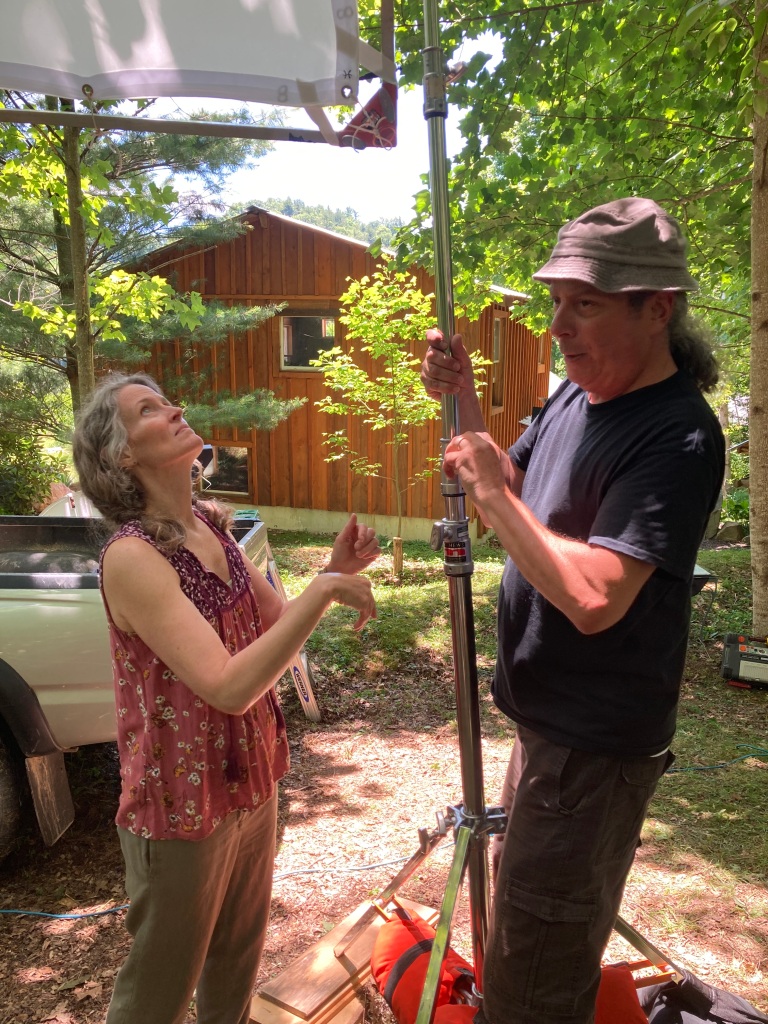
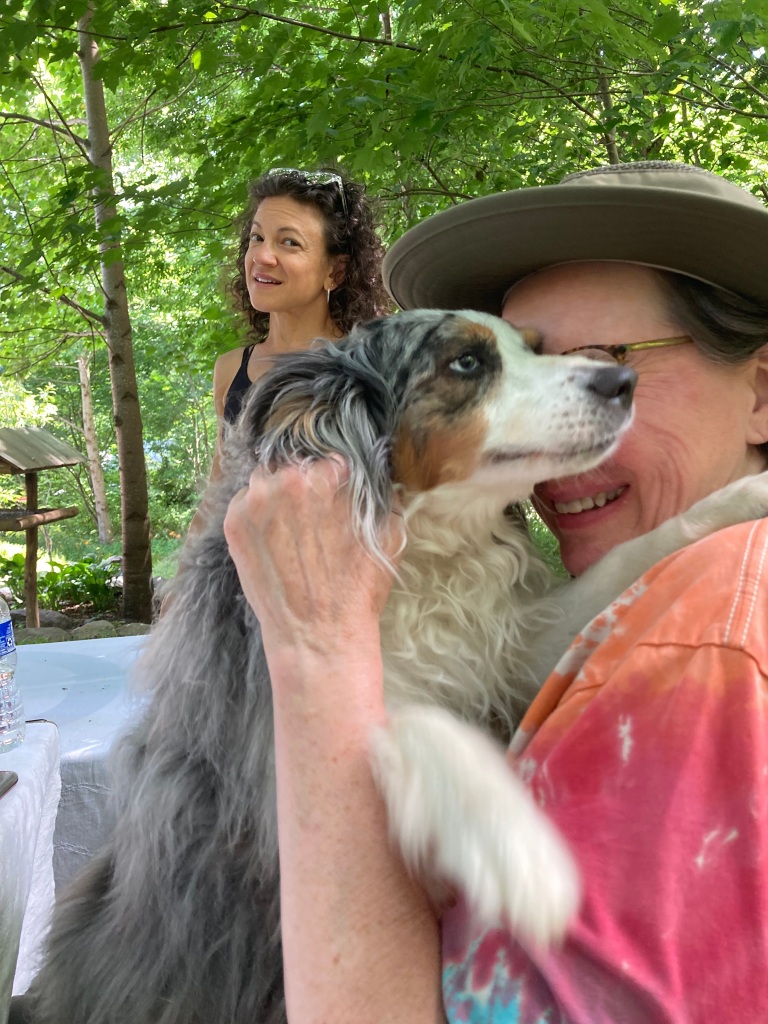

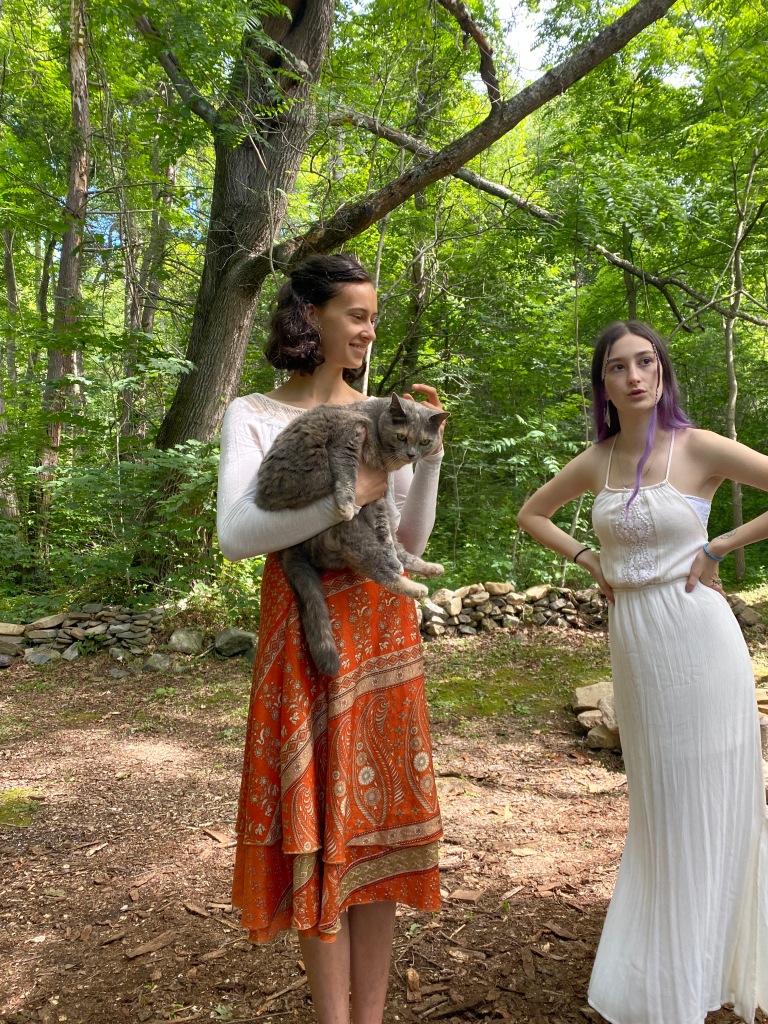
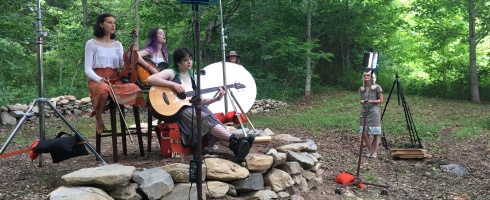

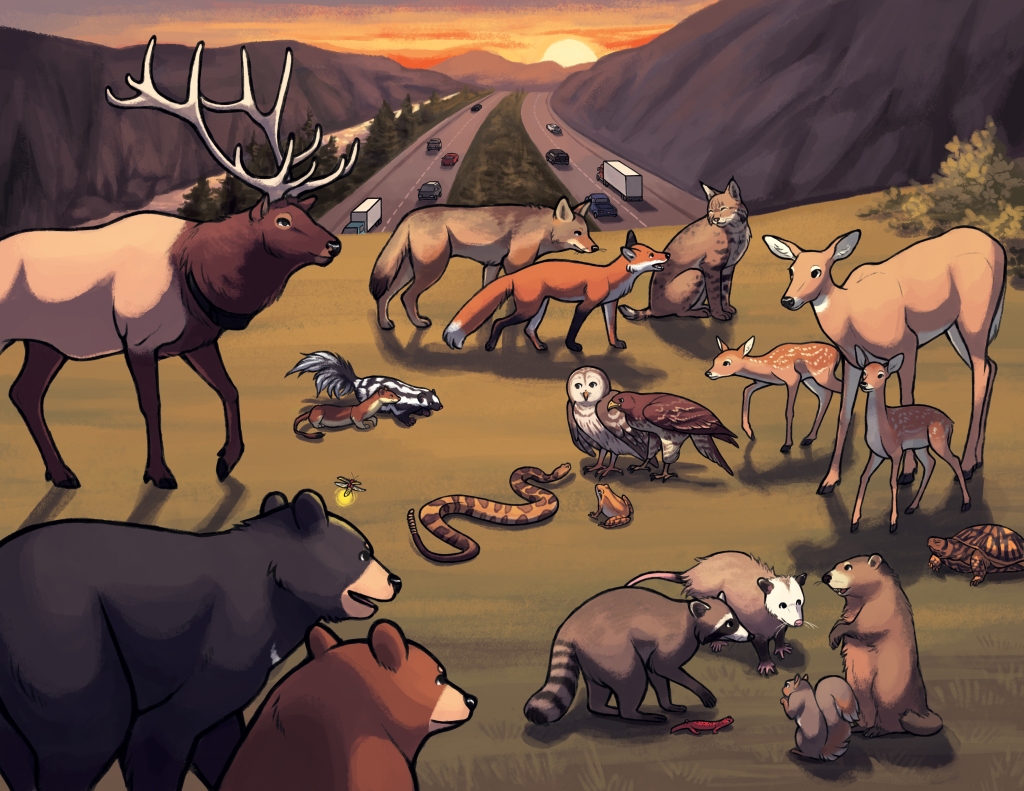



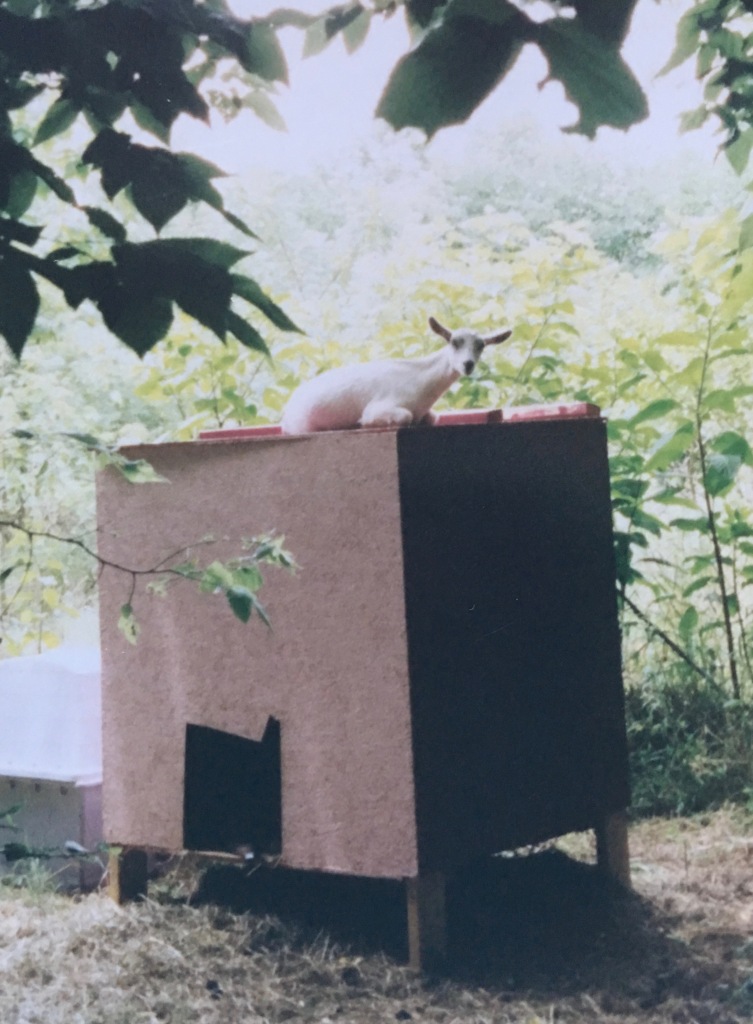




























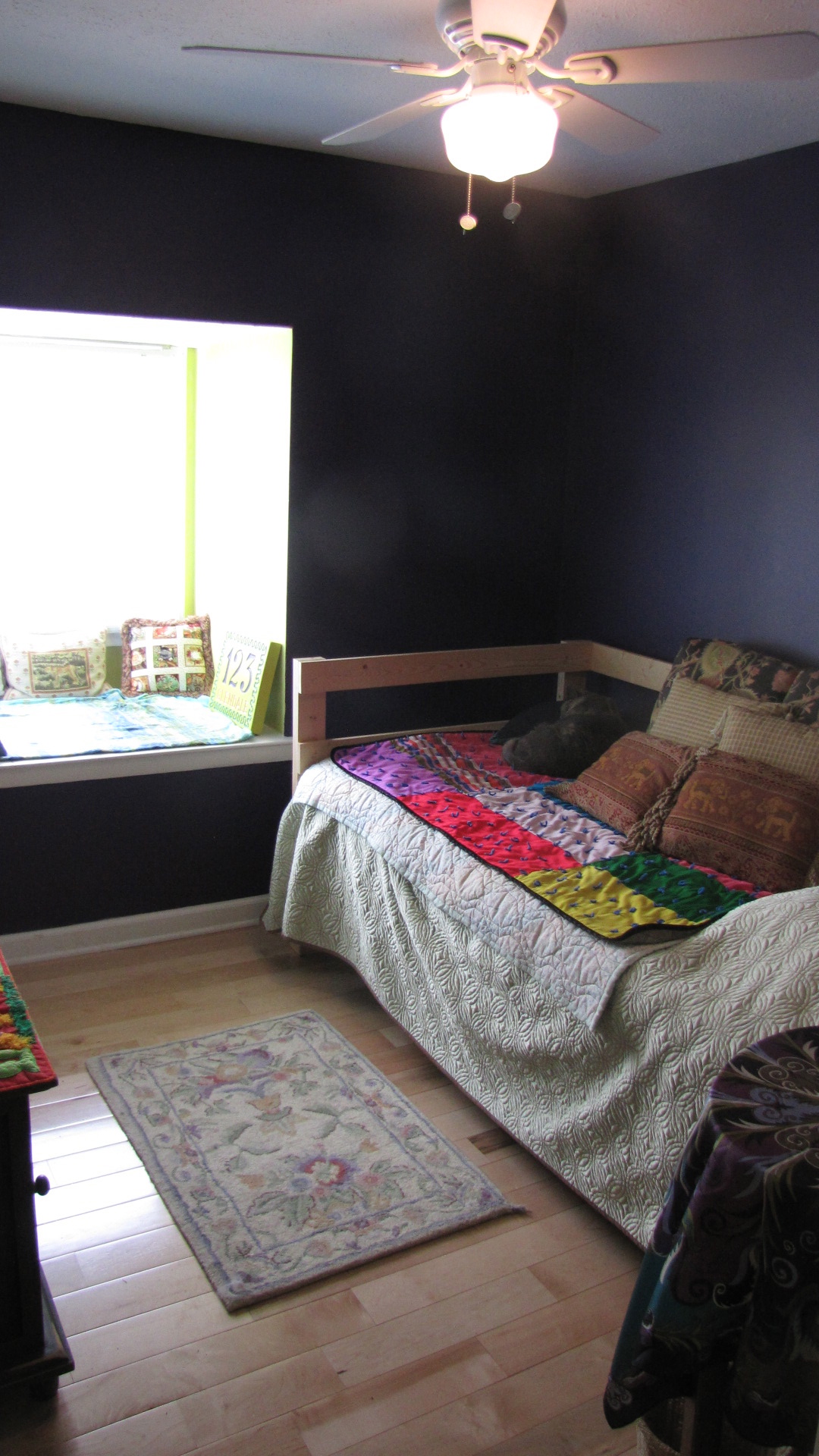














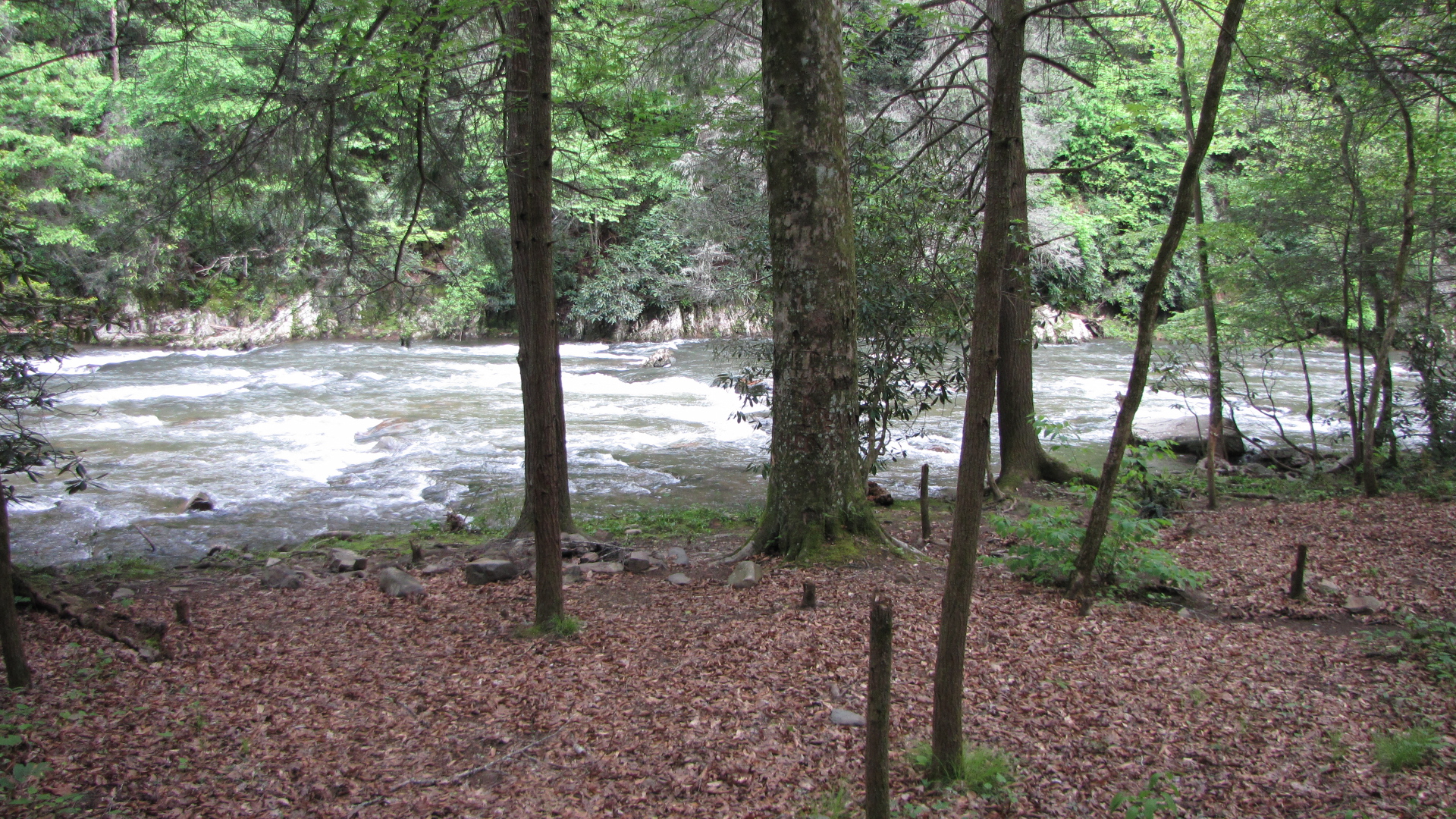


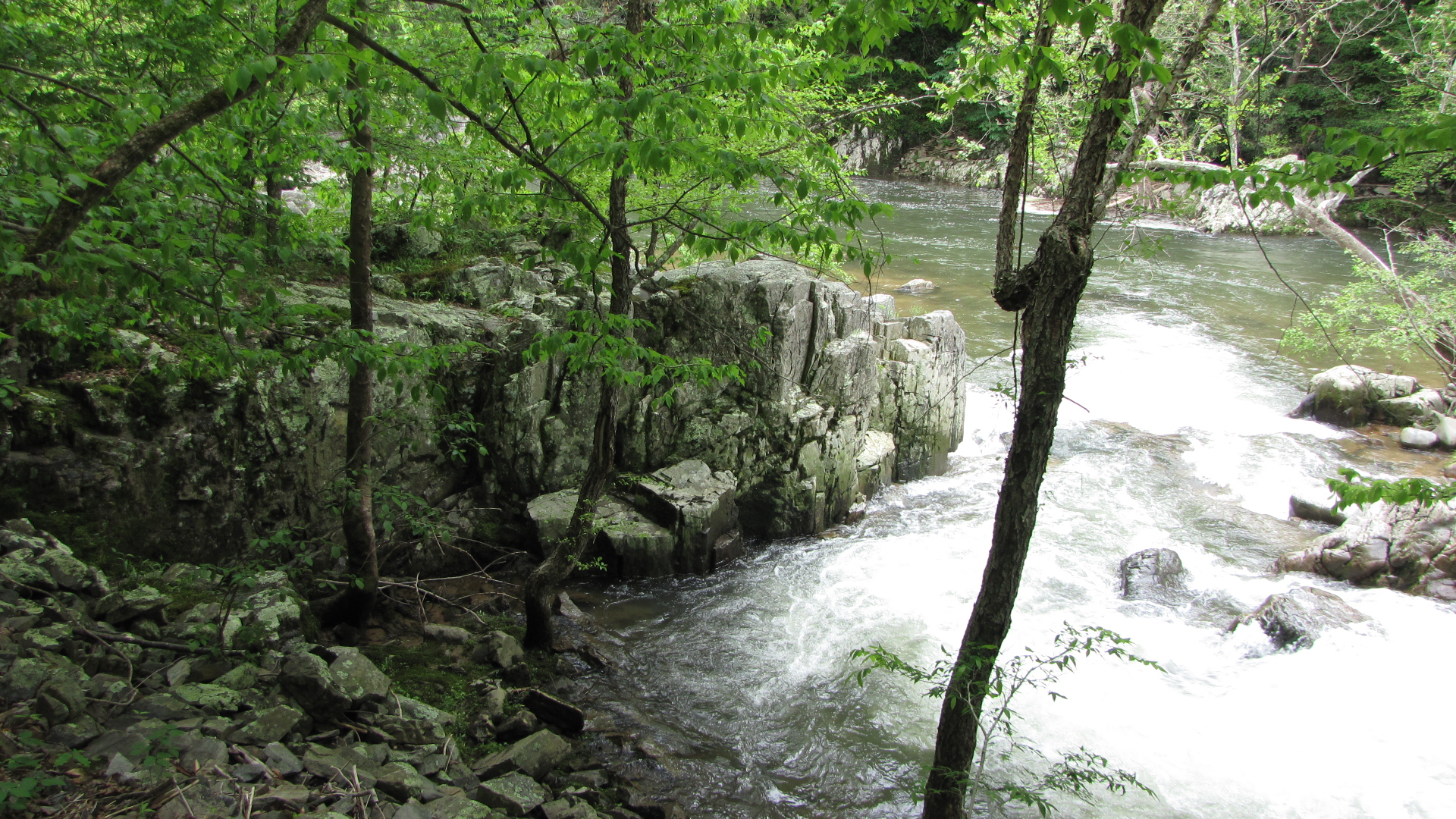
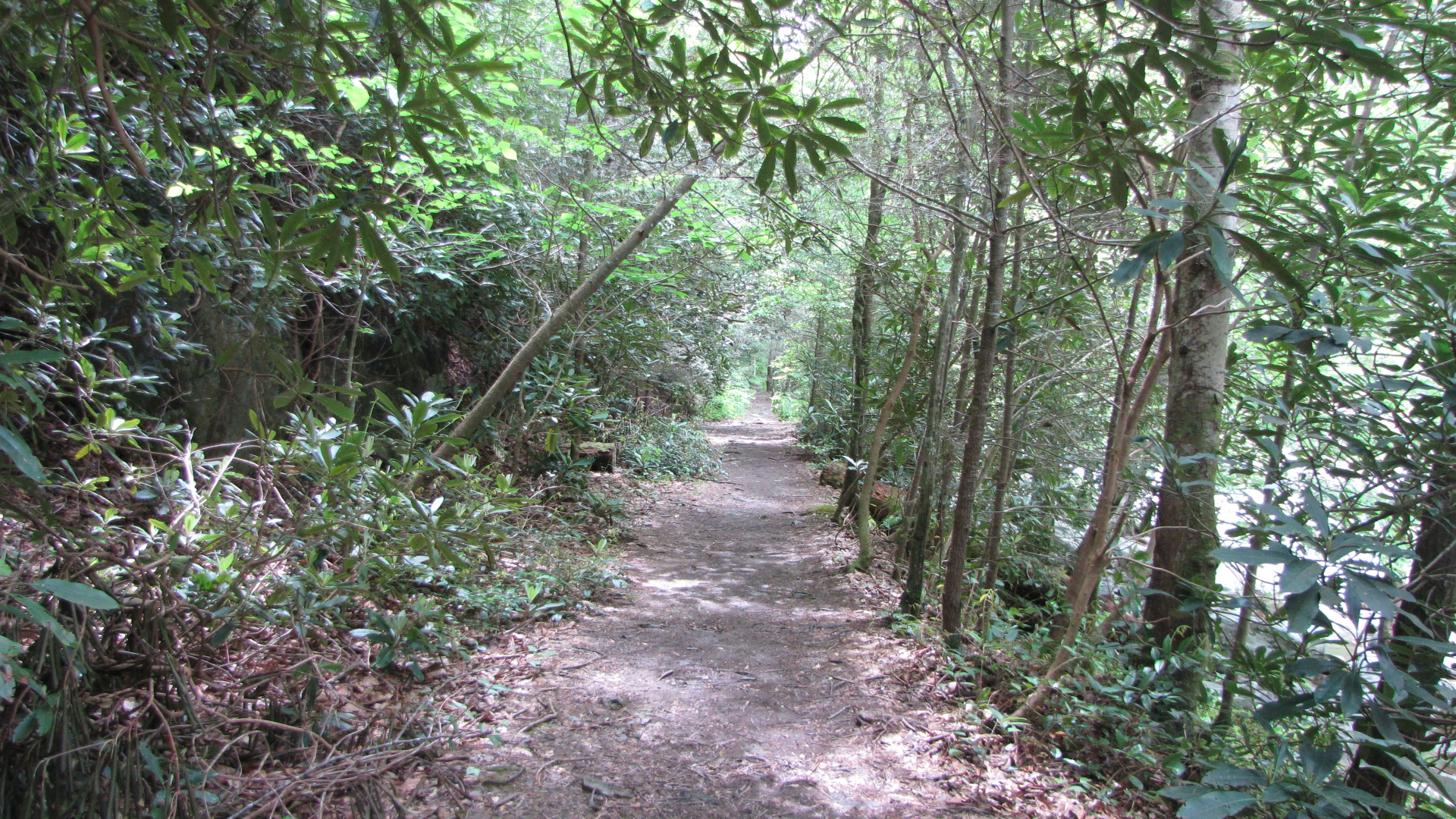




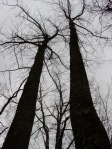






























Recent Comments